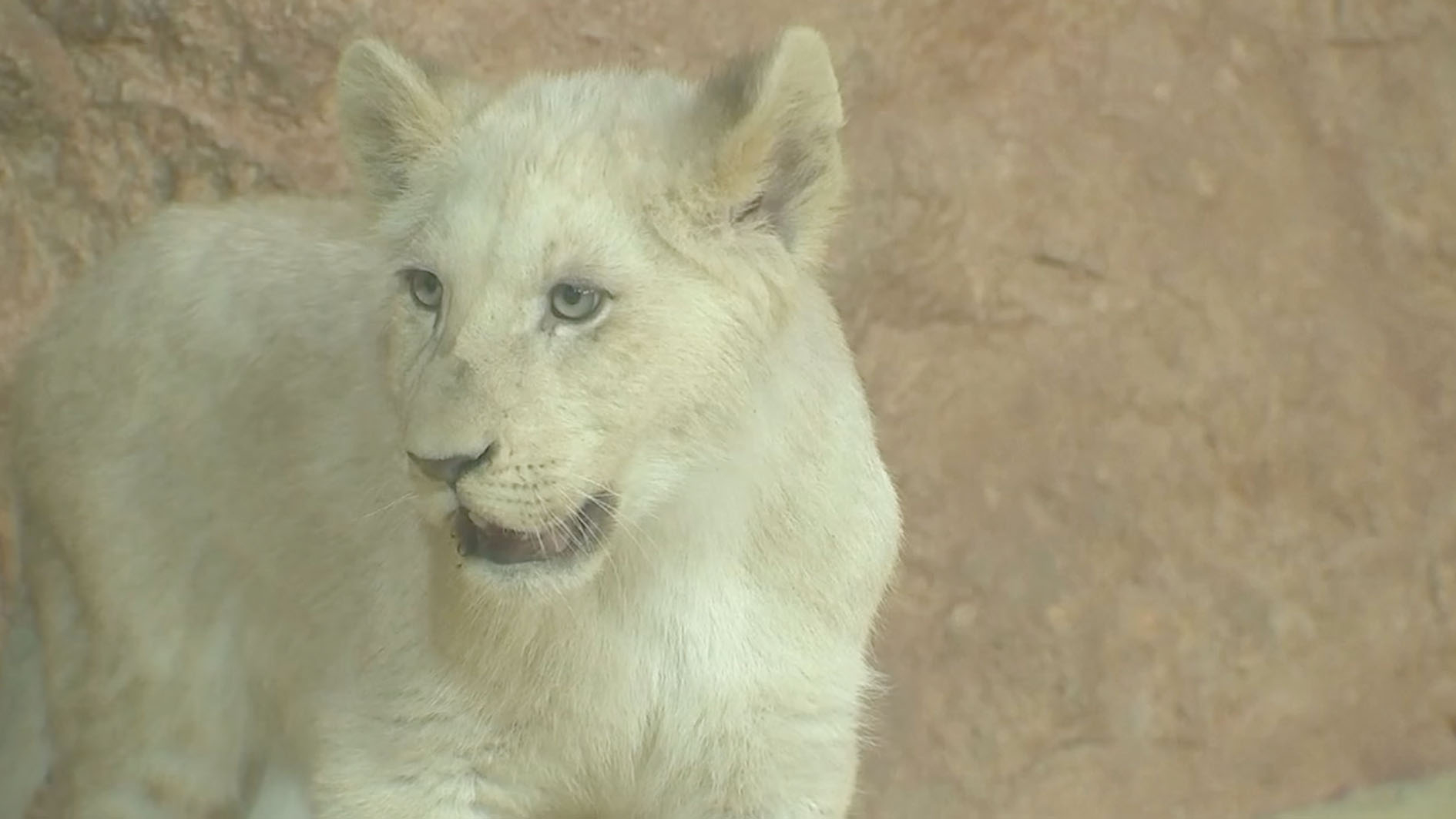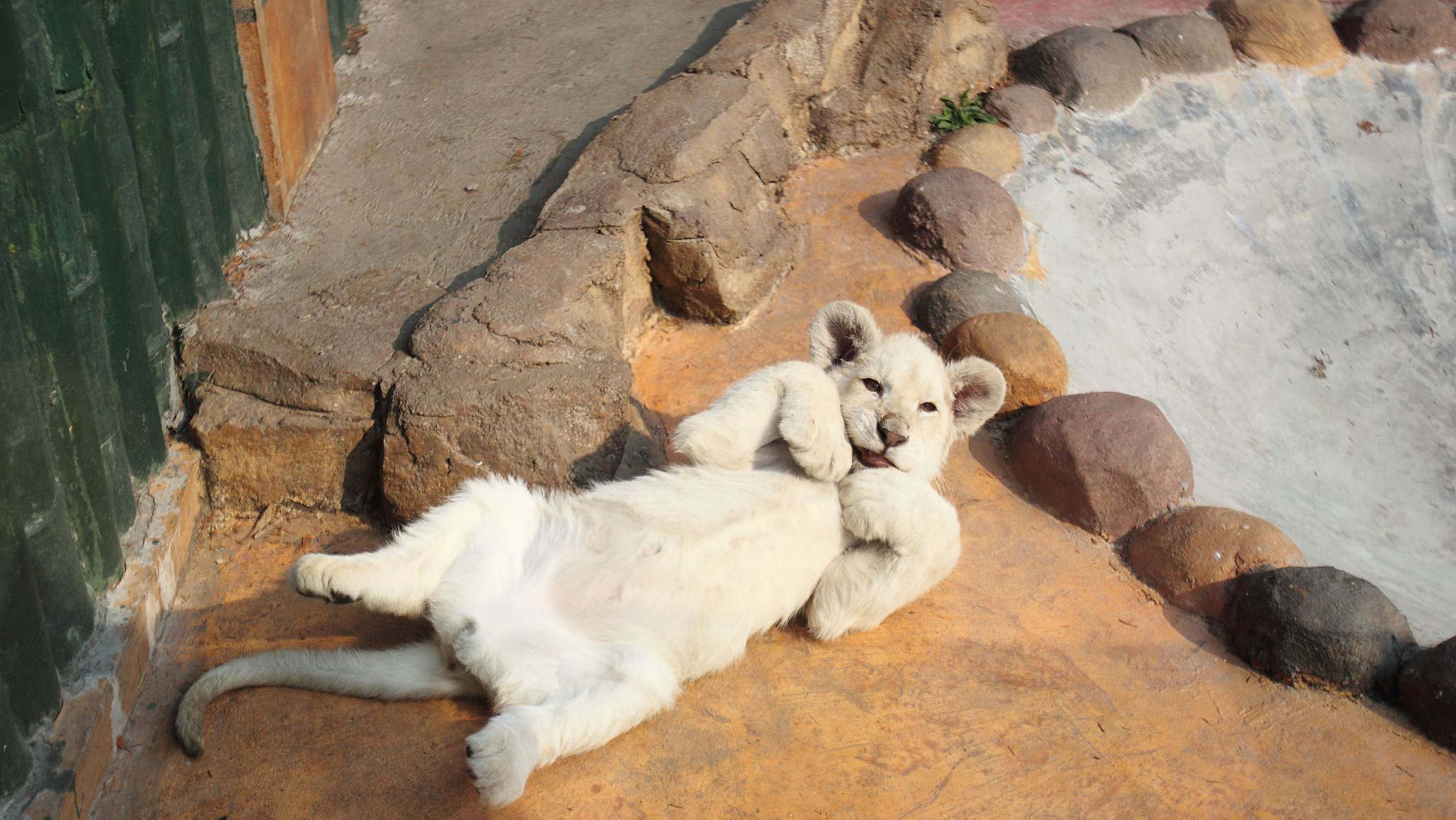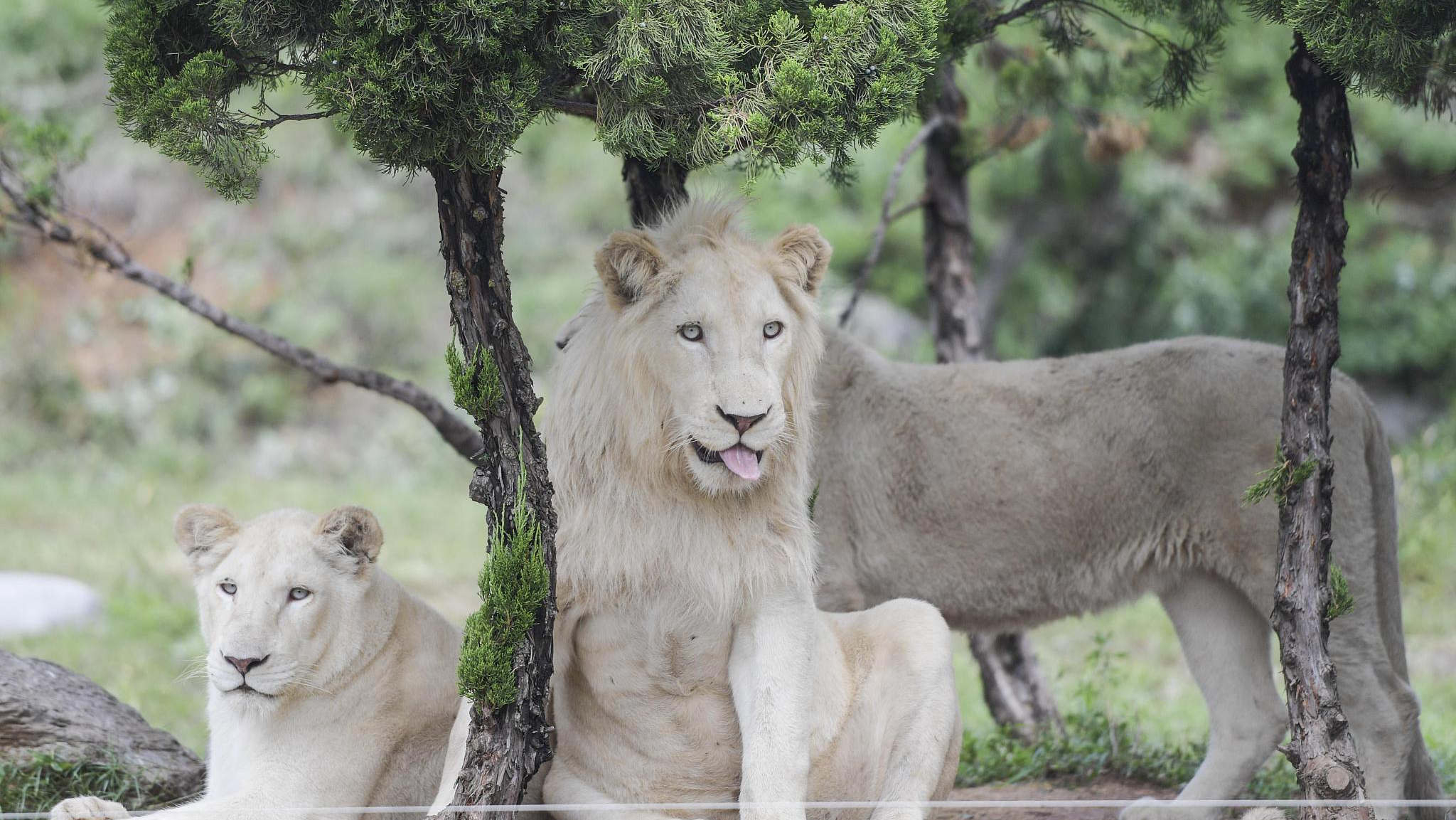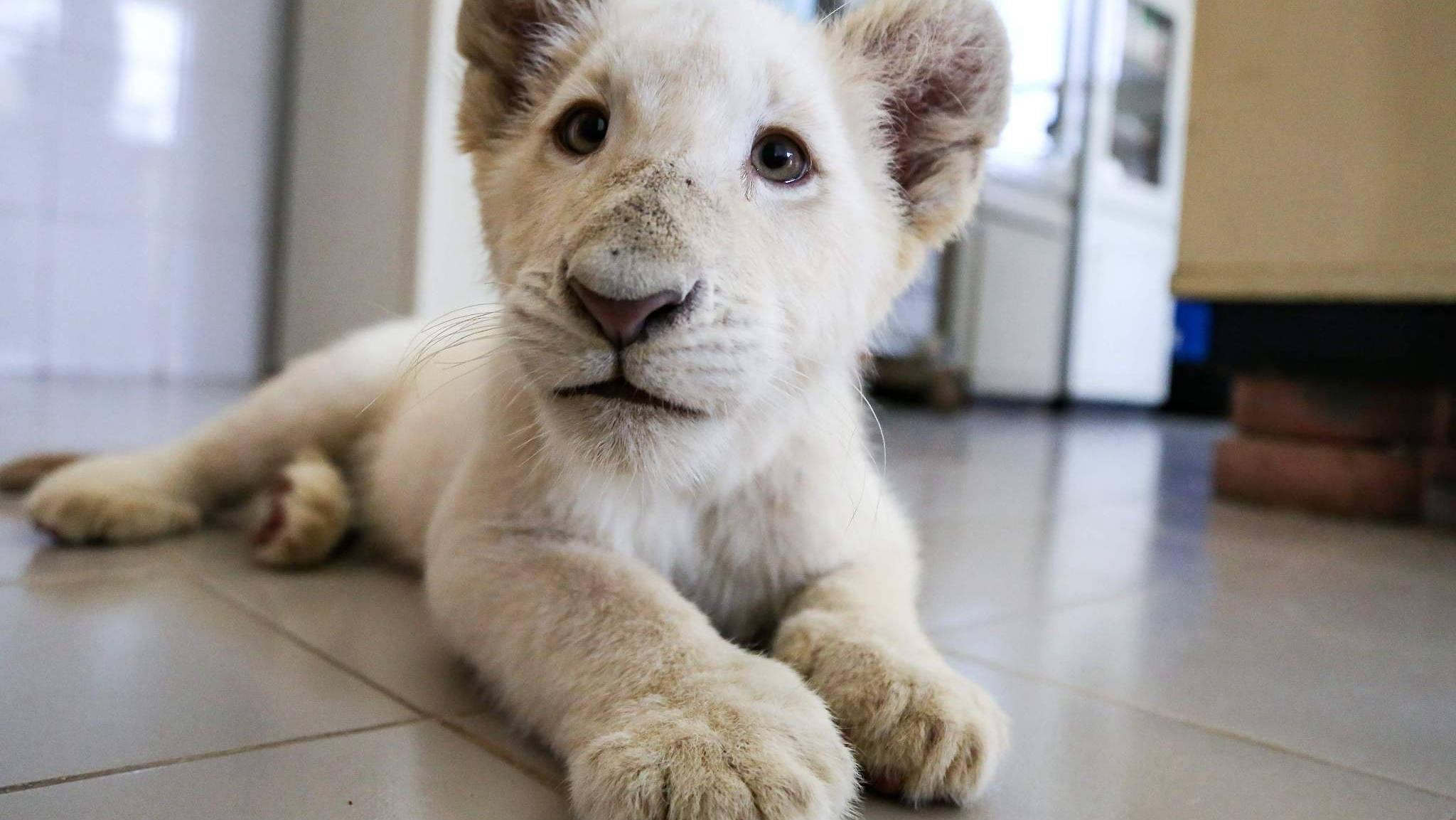
Nature
18:27, 27-Nov-2018
The “Albino” in lions: Why white lions are white
Updated
18:02, 30-Nov-2018
By Zhang Hao
00:58

Four white lion cubs were given names three days ago in Germany. The video of the cubs running around in front of the signs with their names and photos has made their unique white coat a talking point again.

A white lion cub bathing in the sun. /VCG Photo
A white lion cub bathing in the sun. /VCG Photo
For a long time, white lions have been mistakenly regarded as albinos or a different species of lion - but neither of these is true. Their white coat is mainly the result of a recessive gene, and pigment can be found on the tips of their nose or areas behind their ears whereas albinos are completely short of it.

Three white lions introduced from South Africa are seen in Jinan, Shandong province, China. /VCG Photo
Three white lions introduced from South Africa are seen in Jinan, Shandong province, China. /VCG Photo
The first white lion was spotted in the Timbavati region of South Africa. The discovery of these rare looking lions caused such a great sensation that decades of hunting and capturing ensued, pushing them to the edge of extinction in the wild. Nowadays, almost all white lions bred across the world are in captivity. In 2006, the population of white lions even rose slightly - a good sign that the white fur gene still exists, even after more than a decade of technical extinction.

View of a four-month-old white lion cub at the Altiplano zoo in Tlaxcala, Mexico. /VCG Photo
View of a four-month-old white lion cub at the Altiplano zoo in Tlaxcala, Mexico. /VCG Photo
There are also people who believe that the white coat makes survival in the wild difficult, but this thought has never been proved true. Instead, the fact that white lions have been seen roaming freely and hunting as well as their tawny siblings after their release into the wild offers quite solid evidence contrary to this idea.

SITEMAP
Copyright © 2018 CGTN. Beijing ICP prepared NO.16065310-3
Copyright © 2018 CGTN. Beijing ICP prepared NO.16065310-3